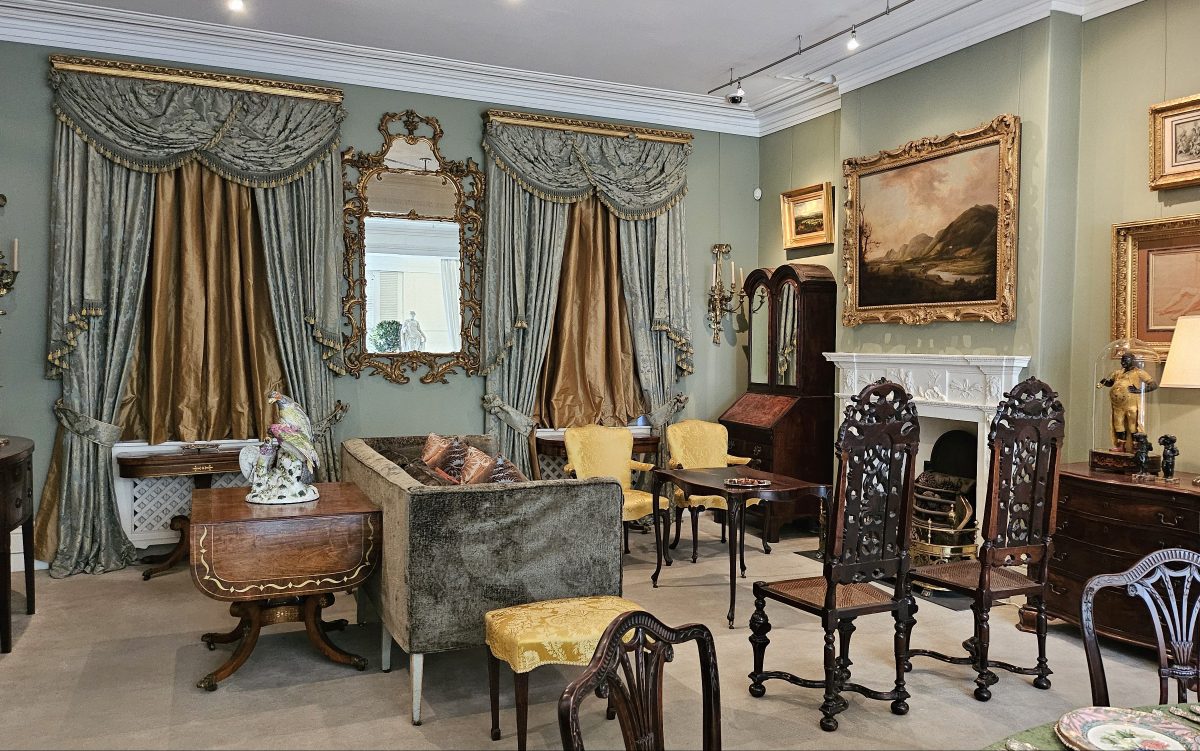Nestled in the residential area of East Melbourne and only accessible by a courtesy bus is The Johnston Collection, housed inside founder and antiques dealer, William Robert Johnston’s (1911-1986) Fairhall residence.
The building was converted into an exhibition house and opened to the public in 1990, with the collection containing over 1500 items of English Georgian, Regency and Louis XV fine and decorative arts and colonial objects.
The exhibition tour, Fit for a King: Vincent Jenden Reimagines The Johnston Collection was first envisioned upon the announcements of both an Australian Royal Tour by King Charles III and Queen Camilla and the accession of King Frederik X and Queen Mary of Denmark. The brief was to imagine The Johnston Collection as if the King were to be paying a visit, with rooms and interiors dramatically reset by guest curator and interior designer, Vincent Jenden.
The exhibition brings together objects from The Johnston Collection as well as silverware from The Roger Brookes Bequest.
If you are considering embarking on one of the tours, here are six things to look out for, each with its own unique story.
In this article:
The teacup that started it all
It’s said that a little Minton teacup was what started The Johnston Collection.
At the age of eight, William Johnston was handed a teacup of Minton china with yellow and pink florals by his grandmother. He later recalled that this special cup was where his passion for collecting began. The cup itself, saucer-less, is believed to have been produced around 1815, during the first period of Minton – so it was already an 100-year-old antique when Johnston received it.
Rather than being displayed in its own glass cabinet, this cup sits among the numerous other objects and furnishings as part of Fit for a King: Vincent Jenden Reimagines The Johnston Collection.
The cat on the silver plate
This is a personal favourite. In one of the first rooms visitors encounter, those with eagle eyes will find a feline friend at the centre of a silver plate.
The cat has its lips curled up in a friendly smile and the craftsmanship prompts an appreciation of all the dazzling silverware that the plate sits beside – some pieces showing wear and tear, and others pristinely on display.
The knight who holds the reins in his teeth
On one gold-gilded ceramic plate, there is a large family emblem, but what is really interesting is a knight on horseback in the top left corner. It depicts a soldier in armour, but something is off – he is holding the horse’s reins in his mouth while one hand carries his sword and his other sleeve is limp at his side.
Presumably the soldier has lost an arm in battle, but this seems to have not deterred his determination.
The reference for the Australian Open trophy
Did you know? The original reference for the Men’s Australian Open trophy (Norman Brookes Challenge Cup) is the Warwick vase, an ornate Roman marble vase from Hadrian’s Villa, Tivoli where fragments where discovered in 1771 by Gavin Hamilton, a Scottish painter-antiquarian and art dealer.
The Australian Open trophy is a silver cast of the Warwick vase, reduced in size, and each year, a duplicate is created by ABC Bullion for that year’s male tennis champion to take home.
There is also a miniature bronze version of the Warwick vase on display as part of Fit for a King, placed in a location where King Charles would be able to admire it at his leisure…
The clock indicating it’s always 3.33
Clocks became a symbol of wealth and status during the European Renaissance period. Being able to keep track of time or manage one’s time was a luxury not many could afford (in some cases, it still is).
Among The Johnston Collection’s array of timekeeping artefacts, many of which are still functional, there is one particular clock that is stuck at the angel number, 3.33pm.
Hint: it’s not a “real” clock.
Read: An exclusive taste of historic Paris in Victoria’s heritage city
The nine eagles for King Charles
Jenden’s bedroom design for King Charles is filled with His Majesty’s favourite things and aesthetics that Jenden felt would appeal to the UK monarch. They include symbols of power, knowledge, wisdom and masculinity.
Eagles feature prominently in the room, from terracotta-glazed to gold-gilted and wood-carved. There are nine of them in total.
Tours for Fit for a King: Vincent Jenden Reimagines The Johnston Collection are held from Wednesday to Sunday, various times, until 25 August; bookings required.





